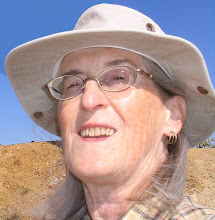While working on the second Stem Sock last night, I glanced down at my directions to see how long the heel flap needed to be. Suddenly it was as if I was seeing the pattern from far, far away. This is it? I wondered. The whole pattern? Surely I must be leaving something out.
The piece of paper is 4" x 7"; it's off a pad I received as a gift from some wildlife organization to which I donate funds from time to time.
 See, here's the first page. It has the cast-on, stitch pattern, number of repeats to heel, heel flap length, heel turn directions, number of stitches to pick up for the gusset, number of patterns to the toe, style of toe. Everything, really, is on one side.
See, here's the first page. It has the cast-on, stitch pattern, number of repeats to heel, heel flap length, heel turn directions, number of stitches to pick up for the gusset, number of patterns to the toe, style of toe. Everything, really, is on one side.
 On the flip side I keep track of gusset and toe decreases. There are two sets of decrease/plain tallies – one for each sock – but only one list for the number of stitches that should be on each round of the toe decreases. I put a check next to the numbers for the first sock and circle them for the second sock.
On the flip side I keep track of gusset and toe decreases. There are two sets of decrease/plain tallies – one for each sock – but only one list for the number of stitches that should be on each round of the toe decreases. I put a check next to the numbers for the first sock and circle them for the second sock.
This method works for me. I could pick up any one from my collection of little slips of paper and knit a sock from it. And the sock would fit perfectly. So, for me, these are patterns. But I know they would not be for anyone else. What about someone with a larger foot or ankle? Differently shaped foot?
I've thought of trying to convert one of my kneesock pseudo-patterns into a real pattern that others could use, because knee socks are particularly challenging and there are few good patterns available. As I began to expand my perhaps-overly-concise notes I realized how difficult this pattern writing business can be. How much tutorial information to include? How to convey the overall sense of the design? How much flexibility to allow for different knitting styles? How to accommodate different sizes? And hardest of all – how to cope with different thinking styles? We all assimilate information in different ways, and what is clear to one is confusing to another.
I have gained a new respect for pattern writers, whether they do it for money or for the love. I don't know if I will succeed in my task of pattern creation, but I do know that I will be less likely in future to complain quite so loudly about "poorly written" patterns.



1 comment:
Hi Wool Enough,
Thank your for your comment on Knitter's. I am not shocked that that pattern is late 60s. Usually retro is cute, but not this version.
I have been meaning to comment on this post. If you follow the conventions of pattern writing (just see a published pattern in a credible publication) you don't have to worry about people's varied thinking and knitting styles, because there is no way you can accomodate them all. Knitters should know themselves and undestand how to adapt themselves to the pattern or vice versa.
Beverly
Post a Comment